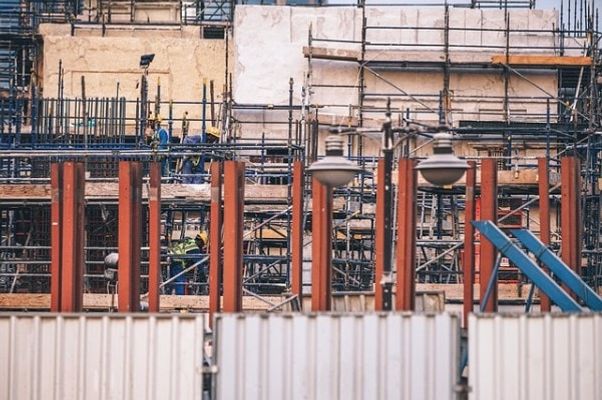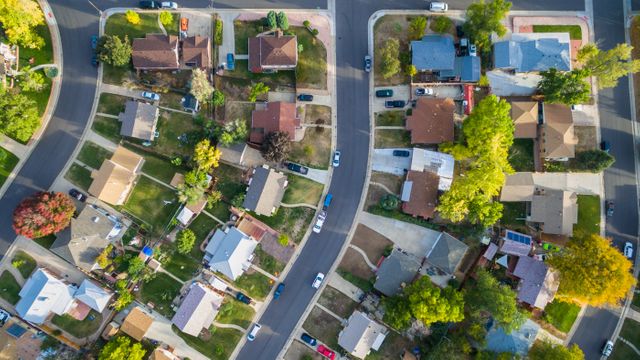5.3.7
Measuring Regeneration Success
Success of Regeneration - Measures
Success of Regeneration - Measures
The success of regeneration can be measured using a range of indicators. These include economic, social and environmental measures.


Economic measures
Economic measures
- Increase in local income levels.
- Improved economic performance according to a before/after comparison of IMD indicators.
- Changes in employment and unemployment in the local area.


Environmental measures
Environmental measures
- Improvements in the quality of the environment according to air quality and water quality measures from the Environmental Agency's data.
- Improvements in the amount of green space available to local residents.
- Improvements in security and safety via neighbourhood redesign (pedestrian zones, lighting, street furniture, public art).
- Evidence of tackling environmental stress factors (dereliction, industrial contamination, graffiti, litter and noise). This could be done using policing or projects to install double-glazing in local housing.
Success of Regeneration - Value Judgments
Success of Regeneration - Value Judgments
A success to one person may not be a success to another person. Stakeholders are individuals or groups (e.g residents, businesses and local councils) that have an interest in companies or processes. Regeneration may not be a success to some stakeholders because of:


Demographic changes
Demographic changes
- Some local people may be forced out of an area.
- Elderly people may dislike a region if it becomes busier and has less green space.
- Some people on lower incomes may not be able to afford to live in an area if it becomes more popular and the cost of living and housing rises.


Cultural differences
Cultural differences
- Lots of 'new' people may enter an area.
- They may have different cultures and preferences because they are of different ages, cultural backgrounds or countries.
- The establishment of a 'Chinatown' area in a new city may be loved by some and disliked by others.


Change character of a place
Change character of a place
- New people, new jobs and new developments may change the character of a place and locals may like the status quo.
- Building skyscrapers and office buildings in a previously rural town may tarnish the memories and attachment of local residents.
- People's lived experiences, attachments and perceptions will affect their view of a place.


Politics
Politics
- Different stakeholders may judge success based on different criteria. This will inevitably lead to disagreement.
- Party politics and competing for votes may affect decisions. Some people may think that 'value for money' is the most important factor. There may be conflicts between national and local government policy and regeneration schemes might be reversed or cancelled if there is a change in local or national government.
Examples of Stakeholder Attitudes
Examples of Stakeholder Attitudes
Stakeholders are individuals or groups involved, or with an interest, in a regeneration scheme. They range from residents, businesses, environmentalists to planners and local councils. Their different priorities could be:


National government
National government
- National governments are likely to want to fit any regional development strategy into their national strategy.
- For example, the 2010-15 target for 200,000 houses to be built each year.


Local government
Local government
- Local government will want to attract investment to raise living standards in the local area and to reduce the levels of deprivation.


Local businesses
Local businesses
- Local businesses will want to increase footfall, sales and profits, but they are unlikely to want to see an increase in competition.


Property developers
Property developers
- Property developers will seek to maximise their profits by building more houses or offices and selling or renting them at a higher price.


Residents
Residents
- Residents will want higher quality housing at a lower price.
- Residents are also likely to want more employment opportunities, better community facilities and a better feeling of well-being and belonging.
1Tectonic Processes & Hazards
1.1Tectonic Processes & Hazards
1.2Natural Disasters
1.3Natural Disaster Case Studies
1.4Trends & Patterns
2Option 2A: Glaciated Landscapes & Change
2.1Glaciated Landscapes Over Time
2.2Periglacial Landscapes
2.3Glacial Processes
2.4Glacial Landforms
3Option 2B: Coastal Landscapes & Change
3.1Coastal Landscapes
3.2Coastal Erosion & Deposition
3.3Coastal Risks
4Globalisation
4.1Globalisation
4.2Negatives of Globalisation
4.3Global Shift
4.5Culture
4.6Measuring Development
5Option 4A: Regenerating Places
5.1Types of Economies
5.2Function of Places
5.3Regeneration
5.4Regeneration Case Studies
6Option 4B: Diverse Places
6.1Population Structure
6.2Past & Present Connections
6.3Urban & Rural Spaces
6.4Diversity
6.5Urban & Rural Case Studies
6.6Case Study - Tower Hamlets
6.7Case Study - Sturton-le-Steeple
7The Water Cycle & Water Insecurity (A2 only)
7.1Hydrological Processes Global to Local
7.2Influences on the Water Cycle
7.3Water Insecurity
8The Carbon Cycle & Energy Security (A2 only)
8.1The Carbon Cycle
8.2Energy Consumption
8.3Alternative Energy
8.4Growing Demand for Resources
9Superpowers (A2 only)
9.1Superpowers
9.2Hard & Soft Power
9.2.1Hard & Soft Power
9.2.2Emerging Powers - China Rivalry
9.2.3Emerging Powers - Chinese Sources of Power
9.2.4Emerging Powers - Brazil
9.2.5Emerging Powers - Russia
9.2.6Emerging Powers - India
9.2.7Theories of Development
9.2.8Power Case Studies: Chinese One Belt One Road
9.2.9Power Case Studies: Pakistan Nuclear Arms
9.2.10Power Case Studies: OPEC
9.3IGOs, TNCs & Alliances
10Option 8A: Health & Human Rights (A2 only)
10.1Human Development
10.2Role of Governments & IGOs
10.3Human Rights
10.4Interventions
11Option 8B: Migration & Identity (A2 only)
11.1Globalisation & Migration
11.2Consequences of Migration
11.3Nation States
11.4Responses to Global Migration
Jump to other topics
1Tectonic Processes & Hazards
1.1Tectonic Processes & Hazards
1.2Natural Disasters
1.3Natural Disaster Case Studies
1.4Trends & Patterns
2Option 2A: Glaciated Landscapes & Change
2.1Glaciated Landscapes Over Time
2.2Periglacial Landscapes
2.3Glacial Processes
2.4Glacial Landforms
3Option 2B: Coastal Landscapes & Change
3.1Coastal Landscapes
3.2Coastal Erosion & Deposition
3.3Coastal Risks
4Globalisation
4.1Globalisation
4.2Negatives of Globalisation
4.3Global Shift
4.5Culture
4.6Measuring Development
5Option 4A: Regenerating Places
5.1Types of Economies
5.2Function of Places
5.3Regeneration
5.4Regeneration Case Studies
6Option 4B: Diverse Places
6.1Population Structure
6.2Past & Present Connections
6.3Urban & Rural Spaces
6.4Diversity
6.5Urban & Rural Case Studies
6.6Case Study - Tower Hamlets
6.7Case Study - Sturton-le-Steeple
7The Water Cycle & Water Insecurity (A2 only)
7.1Hydrological Processes Global to Local
7.2Influences on the Water Cycle
7.3Water Insecurity
8The Carbon Cycle & Energy Security (A2 only)
8.1The Carbon Cycle
8.2Energy Consumption
8.3Alternative Energy
8.4Growing Demand for Resources
9Superpowers (A2 only)
9.1Superpowers
9.2Hard & Soft Power
9.2.1Hard & Soft Power
9.2.2Emerging Powers - China Rivalry
9.2.3Emerging Powers - Chinese Sources of Power
9.2.4Emerging Powers - Brazil
9.2.5Emerging Powers - Russia
9.2.6Emerging Powers - India
9.2.7Theories of Development
9.2.8Power Case Studies: Chinese One Belt One Road
9.2.9Power Case Studies: Pakistan Nuclear Arms
9.2.10Power Case Studies: OPEC
9.3IGOs, TNCs & Alliances
10Option 8A: Health & Human Rights (A2 only)
10.1Human Development
10.2Role of Governments & IGOs
10.3Human Rights
10.4Interventions
11Option 8B: Migration & Identity (A2 only)
11.1Globalisation & Migration
11.2Consequences of Migration
11.3Nation States
11.4Responses to Global Migration
Unlock your full potential with Seneca Premium
Unlimited access to 10,000+ open-ended exam questions
Mini-mock exams based on your study history
Unlock 800+ premium courses & e-books
